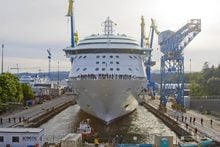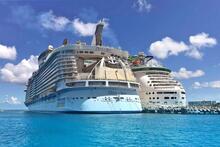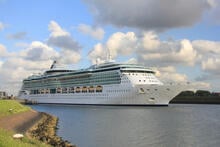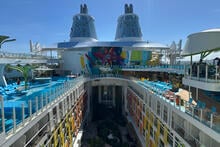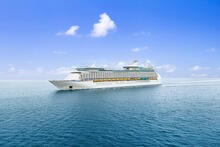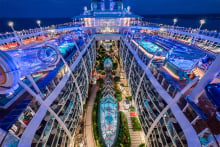Referring to a cruise ship as a boat is one of the biggest faux pas when it comes to cruising. We’ve all heard a first-time cruiser exclaim “Look how big that boat is!” without realizing that they should be calling it a ship.
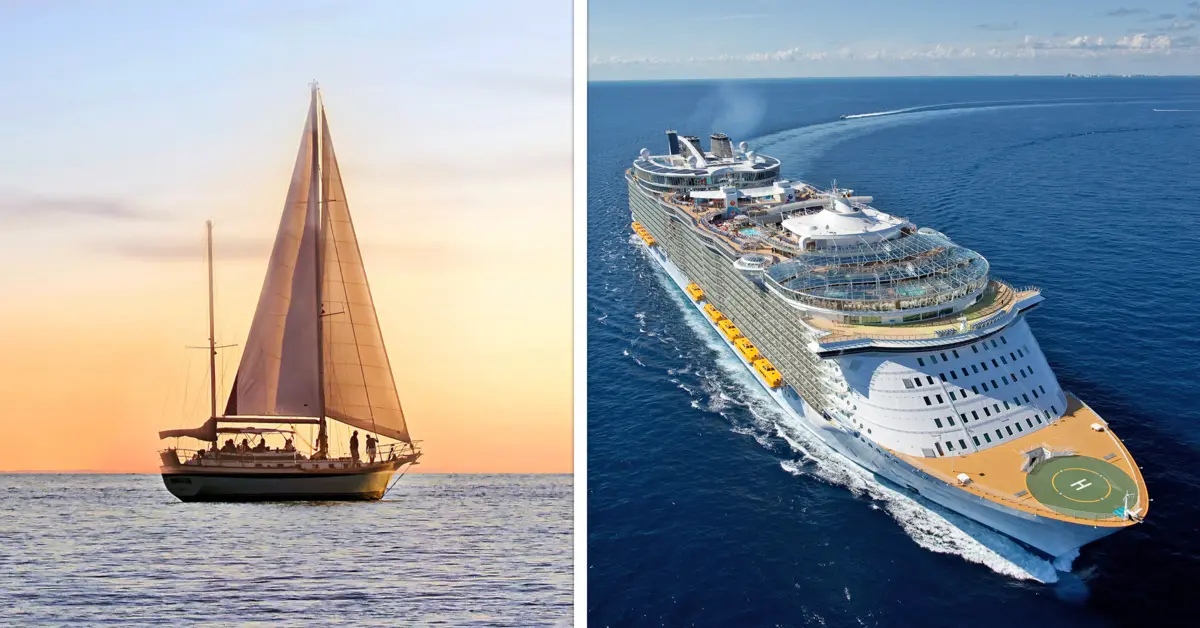
Cruise ships are massive vessels that can weigh over 200,000 tons—the polar opposite of a small sailboat or canoe—but what is the difference between a boat and a ship?
Generally speaking, a boat refers to a small vessel whereas a ship refers to a large vessel. This may seem obvious, but it’s the easiest way to classify a boat versus a ship. A common way to compare the two is that a boat can be carried on a ship, but a ship cannot be carried on a boat.
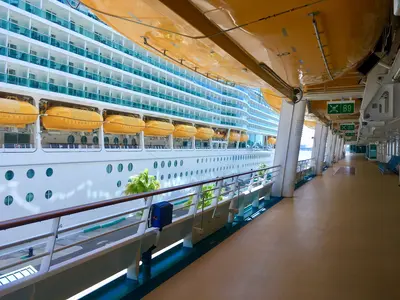
However, the exact definition of a boat versus a ship cannot be determined by just size. At what size does a boat become a ship? Does having a certain number of engines turn a boat into a ship? Or does the body of water a vessel travels through determine if it is a boat or ship?
Unfortunately, there’s no standard, internationally-accepted definition of a boat versus a ship. Nonetheless, there are a few ways in which you can usually tell the difference between a boat and a ship.
Size of a boat versus a ship
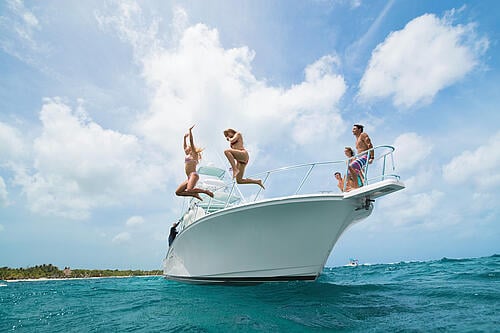
The most obvious difference between a boat and a ship is size—boats are smaller than ships. Depending on the source, a water going vessel could be considered a ship when it is over 100 feet in length, although by some definitions it must be even longer.
Length is not the only factor that determines whether it is a ship or boat, though. Some definitions require a vessel to weigh over 500 tons to be considered a ship. For reference, the average sailboat weighs a little over four tons while the smallest Royal Caribbean ship has a gross tonnage of nearly 80,000!
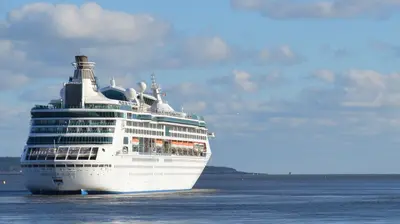
Ships also have the potential to transport boats. The largest cruise ships, for example, carry around twenty lifeboats, but you'll never see a lifeboat carrying a ship (hence why it’s a lifeboat and not a lifeship).
Powering a boat versus a ship
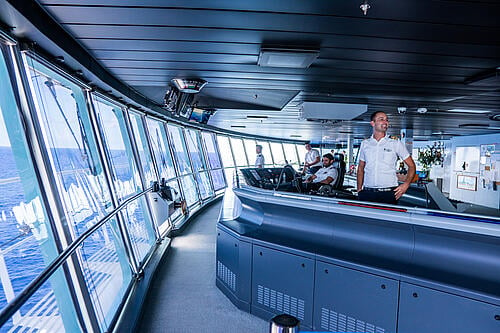
Powering a ship is a complex operation. Ships have much more complex technology onboard, with modern navigation systems and operational equipment.
Allure of the Seas—one of Royal Caribbean’s biggest ships—has six engines that provide 13,500 horsepower, making the 225,282 ton vessel sail smoothly through the seas. In addition to engines are tunnel thrusters, stabilizers, gas turbines, wastewater treatment systems, and large galleys.
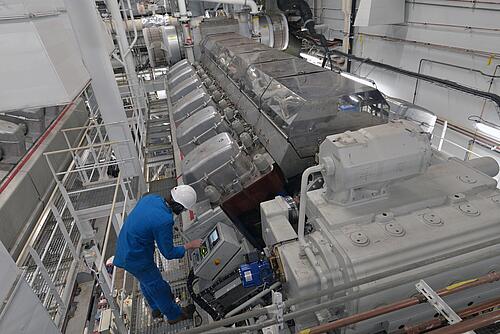
Boats, on the other hand, don’t require such complex mechanics. Small boats, such as canoes and kayaks, can be powered by a single paddle, whereas sailboats move with the wind. You certainly won’t see a Royal Caribbean ship powered by wind!
Boats can also be powered by motors, but they aren’t nearly as powerful as the engines you’ll find on a ship.
Crew, passengers, and cargo

Powering a ship requires much more technology compared to a boat. Most Royal Caribbean cruise ships have over 1,000 crew members working onboard, and most of them are not even involved in the technical operation of the ship.
Sure, you have crew working in the engine room, but there are chefs, stateroom attendants, entertainers, and musicians onboard as well, something you won’t find on most boats.
Other ships, such as cargo ships, may only have 20 to 30 crew members onboard. This is still much more than you’ll find on most boats, especially those built for only two or three people. Even most luxury yachts, which are considered large for boat standards, almost always have a crew under 15 people.
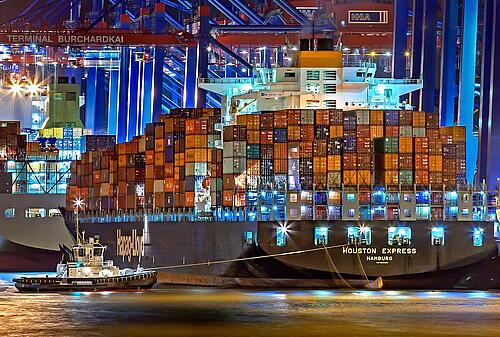
Some people classify a ship as a vessel that has a permanent crew whether the ship is in use or not. A boat may only be manned when it’s in use (i.e. traveling on the water instead of docked).
Furthermore, ships often carry passengers to travel long distances from one place to another. While small boats like water taxis may also carry passengers, it’s typically only for a short distance and there aren’t private cabins for each passenger onboard.

Another way to distinguish between a boat and a ship is in the ship’s cargo. Today’s largest container ships can hold nearly 25,000 containers, with the average somewhere around 15,000. A boat could never compete with the cargo capacity of a cargo ship, with each container weighing over 5,000 pounds when empty!
Boats don’t usually carry cargo, unless it’s a small fishing boat carrying the day’s catch.
Where they sail
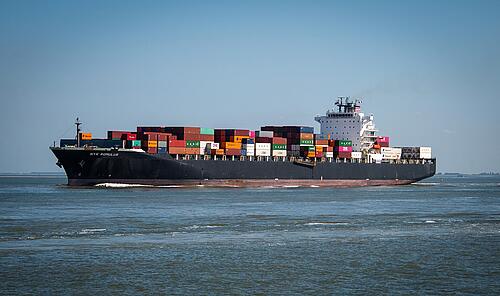
Ships and boats typically sail in different bodies of water. Ships usually sail in the ocean, traveling far distances to carry cargo or passengers. You won’t find a ship traveling in a small lake or river, but you will find ships traversing the world’s oceans from one continent to another.
Examples of ships include cruise ships, container ships, tankers, offshore vessels, naval ships, and large ferries.
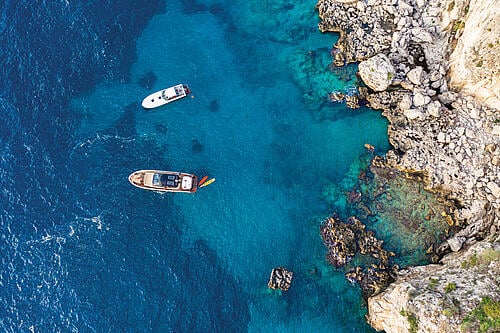
Boats most commonly sail in smaller bodies of water, including ponds, lakes, and rivers. Most boats only travel close to the coast, as they aren’t designed to travel long distances across the open ocean.
Examples of boats include small ferries, water taxis, towing vessels, sailboats, kayaks, and canoes.
What about sailboats and submarines?
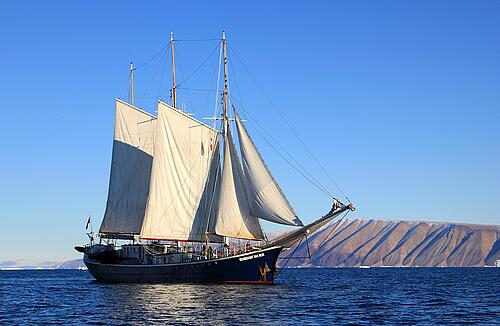
It’s common to classify a boat as a vessel that does not travel long distances in the ocean, but what about a sailboat?
Most sailboats are considered to be boats instead of ships. They are significantly smaller than vessels like cargo ships and cruise ships, hold fewer passengers and crew, and are usually used for short-term travel near the coast.
However, there is a difference between a sailboat and a sailing ship. Sailing ships are larger vessels with at least three masts, and with square sails on each mast. These ships were the standard vessels used for ocean travel during the Age of Discovery in the 15th century.
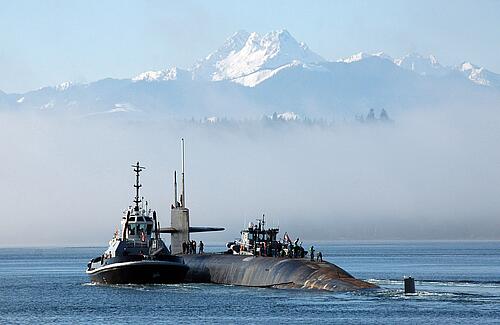
Yet submarines, which should be considered ships, are considered boats. This is due to the history of submarines. Early submarines were carried on ships, so they were classified as boats. As submarines became bigger and bigger over time, the name stuck, and they are still called boats today.
The bottom line
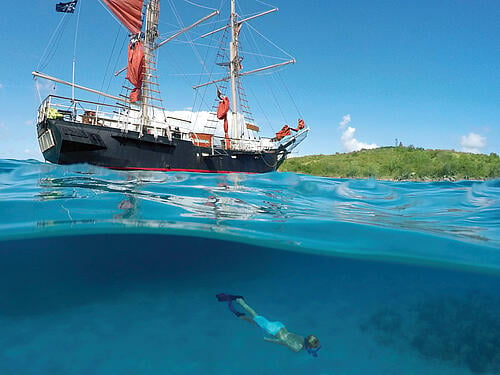
If you’re looking for a concrete definition of a ship versus a boat, you won’t find one. More often than not, it’s easy to distinguish between the two by comparing the size of the vessel, its mechanics, and the body of water the vessel travels through.
As you can see, there are many exceptions, such as with submarines and large sailing ships. If there’s one thing we know for certain, however, it’s that you should never call a cruise ship a boat!


